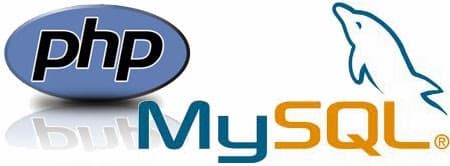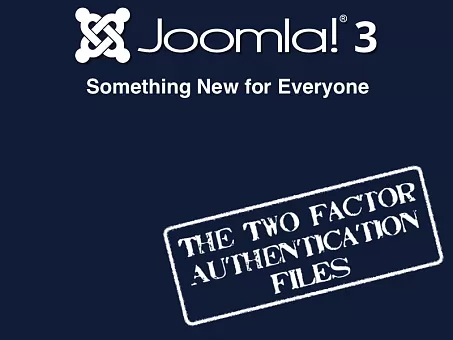
- Details
-
 Written by: Nicholas K. Dionysopoulos
Written by: Nicholas K. Dionysopoulos
I just bought an Intel NUC (Next Unit of Computing) mini-PC to serve as my secondary, Windows-powered development machine (the primary is an Apple Mac Mini). I decided it would be a fun* weekend project to implement an Apache-MySQL-PHP web server without using a pre-packaged server like XAMPP, WAMPServer etc. My goal was to have the same sites run under different versions of PHP by just visiting a different URL on my browser.
* for extremely geek values of "fun"

- Details
-
 Written by: Nicholas K. Dionysopoulos
Written by: Nicholas K. Dionysopoulos
Two weeks ago we transferred our business site, AkeebaBackup.com, to a new host with a downtime of less than 15 minutes. The transfer of course took longer than that. Many people asked how we pulled this off. Keep reading on to find out!

- Details
-
 Written by: Nicholas K. Dionysopoulos
Written by: Nicholas K. Dionysopoulos
I'm quite sure that most of you wouldn't bat an eyelid on losing a pro bono job. You proposed to do some work for free, the other party didn't agree for some odd reason, less work for you, end of story. But once in a while there's a lesson to be had from such an experience, leading to interesting ripple effects. For example, a Joomla! guy ended up with a WordPress blog. Intrigued?

- Details
-
 Written by: Nicholas K. Dionysopoulos
Written by: Nicholas K. Dionysopoulos
Tablets, laptops and the like are great and convenient, but they don’t make much sense for certain needs. Think about media servers / players, home and small office servers (from a simple NAS to special purpose servers), or even educational / kid computers to hook up on the living room’s TV set to save some space and help parents monitor their kid’s activity. These use cases call for small, power-efficient yet powerful and easy to use computers. Over the last few years it has become increasingly easier to get such a machine. In this short article I am going to present the three small form factor computers which have won my heart and a permanent place in my home office.

- Details
-
 Written by: Nicholas K. Dionysopoulos
Written by: Nicholas K. Dionysopoulos
Joomla! 3.2 includes an abundance of new features appealing to end users and developers alike. One of these new features is two factor authentication. In this tutorial you will learn what two factor authentication is and how you can use it in your components to enhance the security of potentially dangerous or important operations, just like most banks do.

- Details
-
 Written by: Nicholas K. Dionysopoulos
Written by: Nicholas K. Dionysopoulos
As I've said many times, I am an avid user of Zend Server for local development on my Mac. It has pretty much everything you need, including a simple to use back-end for viewing issues occuring on your server which make debugging easier. Well, on the debugging front it has a major shortcoming: it comes with Zend Debugger which only works with the very expensive Zend Studio IDE. All other IDEs (Eclipse, NetBeans, phpStorm, ...) only provide support for XDebug. Every time I update Zend Server I have to install and enable XDebug instead of Zend Debugger. It's easy and will help you debugging your PHP applications easily on your local environment. This article describes how to do it.

- Details
-
 Written by: Nicholas K. Dionysopoulos
Written by: Nicholas K. Dionysopoulos
As a Joomla! developer I often find myself providing support to users of my software. Sometimes, despite my best intentions, I hit a stone wall: a server setting is amiss. In this case I explain to my users what the problem is and ask them to contact their host to rectify it. One of the most irritating situations I've found myself dealing with is when a host replies "we can't do this for security reasons". I would generally accept that, if only the host actually knew what they're talking about. And, yes, I am specifically talking about the fopen URL wrappers and the fact that they are stupidly disabled on many hosts.

- Details
-
 Written by: Nicholas K. Dionysopoulos
Written by: Nicholas K. Dionysopoulos
There is a very common misconception that moving configuration.php outside of your Joomla! root somehow makes your site more secure. It’s so common that you can even find instructions on the Joomla! documentation wiki. Let’s separate the myth from the facts and let’s see why this “security” advice may not be as secure as one might think.

- Details
-
 Written by: Nicholas K. Dionysopoulos
Written by: Nicholas K. Dionysopoulos
You may remember that two years ago I reviewed a great book about Joomla! 1.5 written by Eric Tiggeler. Fast forward two years. Joomla! has come up with a great new stable release, Joomla! 2.5. The need for disseminating the knowledge of the CMS to newcomers –or returning users of previous releases– is higher than ever, with Joomla! already powering almost 3% of all Internet sites out there. Eric has once more picked up the task and did a great job with his new book, "Joomla! 2.5: Beginner's Guide" available by Packt Publishing.

- Details
-
 Written by: Nicholas K. Dionysopoulos
Written by: Nicholas K. Dionysopoulos
This is a user-submitted French translation of my "777: The number of the beast" blog post. Please do not post questions in the comments in French. My French is very rusty :)
Je vous promets, cet article n'a rien à voir avec la religion, il traite de la sécurité des sites web. Le démon que je mentionne se refaire au fait d'ouvrir une éventuelle porte pour permettre aux pirates de compromettre votre site. Cet article est long mais je vous promets que vous allez apprendre des choses que vous n'avez jamais imaginées. Faisons la lumière sur le mystère du numéro 777 et tuons le démon !
